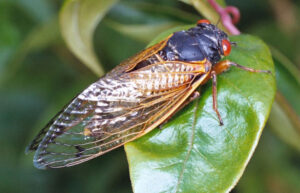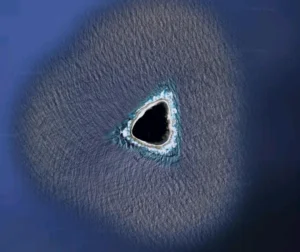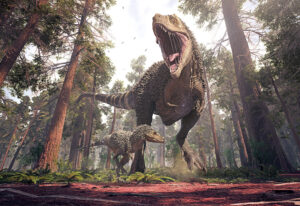Northern Greenland’s most prolific explorer suspects that the “new” northernmost island might not be so new. It may not even be an island.
This week, the internet has been buzzing with news of a “new” northernmost island. Discovered off the northern coast of Greenland, the expedition team has named it Qeqertaq Avannarleq, which they intend to mean “northernmost island” in Greenlandic.
But northern Greenland explorer Dennis Schmitt suggests that their new island might not be such a fresh discovery.
The “new” island
Qeqertaq Avannarleq is a tiny speck of land. The Swiss-funded team that ended up there was actually out to collect bacteria samples on a neighboring outcrop. The team had aimed for Uutaaq (also spelled Oodaaq), an island discovered in 1978 and thought at the time to be the world’s northernmost island. However, Uutaaq has not been seen since 1980. There are not a lot of visitors up there.
When the helicopter landed, they celebrated, thinking that’s where they were. Instead, it soon became clear they were almost a kilometre away. Expedition members noted the mistake as a matter of amusement.
“Yes, we discovered the island by mistake,” said Morten Rasch, polar explorer and head of the Arctic Station research facility in Greenland. “We had absolutely no intention of finding an island — the expedition was purely scientific and we were looking for bacteria communities on Oodaaq Island [sic]. Not because it was the northernmost island, but because it was situated in a very unusual environment.”
A disputed discovery
But Uutaaq was no longer viewed as the world’s most northern island. That title had passed to an island called Stray Dog West (or SDW, Inuit name Kitaa Qeqertaq). SDW was discovered by Dennis Schmitt in 2007. So, the question at hand is whether newly minted Qeqertaq Avannarleq is further north than Schmitt’s similarly tiny dot of land.

Stray Dog West (or Kitaa Qeqertaq), discovered by Dennis Schmitt et. al in 2007. Photo: Jeff Shea/World Parks Inc.
To complicate matters, the two islands might be problematically close to each other. Schmitt, by far the region’s most accomplished explorer, says the new island is so close to SDW that the two are, at the very least, siblings.
Their proximity means considering the technicalities of what makes an island an island, and where one island becomes another within the shifting ice floes of the Arctic Ocean. The details require an expert.
That’s why ExplorersWeb turned to Schmitt. While he drafted his new book of poetry and prepared an opera for release in the near future, the legendary Greenland explorer told us what’s what.

Dennis Schmitt. Photo: Jeff Shea/World Parks Inc.
Dennis Schmitt and shifting islands
Dennis Schmitt’s reputation in northern Greenland borders on adoring. For decades he’s led expeditions across the moraines and the landfast ice, guiding tourists and joining locals on adventures. In 1998, he and his expedition of 10 arctic travelers became the first to climb the world’s northernmost peak, Mount Mara — or Mount Hammeken, depending on who you ask.
Ole Jorgen Hammeken was the only Greenland native on that trip, and Schmitt symbolically named the mountain after him. When many media outlets reported that a “new” northernmost island had appeared that also looked strikingly similar to Stray Dog West, it raised a red flag for Hammeken. “It’s absolutely wrong,” he said. “It’s a scandal. The biggest scandal ever.”
The island’s location to the northwest of Uutaaq pinged Hammeken’s radar. Stray Dog West lies in a similar direction. And possibly, according to Schmitt, along the same glacial moraine shelf.

The Swiss-funded team collecting samples on the “new” island. Photo: Morten Rasch
However, the exact location of SDW is tricky. Schmitt’s team took coordinates for SDW from a moving airplane in 2005.
These are the supposed coordinates and sizes for the three islands in question.
Qeqertaq Avannarleq (“new” island): 83°40’59.1″ north x 30°41’52.2’’ west, 30 meters wide
Stray Dog West (Kitaa Qeqertaq, Schmitt’s Island): 83°40’37” x 31°11′ west, 100m x 60m
Uutaaq: 83°40’33” north x 30°40’10” west, 50m x 50m

Annotations: Jeff Shea/World Parks Inc.
To complicate matters further, there aren’t just three islands or quasi-islands. According to a recent paper in Cambridge University’s Polar Record, written by two of Schmitt’s former colleagues, many scraps of land have appeared and disappeared just off northern Greenland over the years. This includes another one that Schmitt discovered in 2003, called simply 83-42 for its latitude. It lies further north than even last month’s find.

Table: Ole Bennike and Jeff Shea.
What to make of all this? It’s important to consider the terrain.
While much of northern Greenland is mountainous, that part of the coast is a lowland, and the sea would be correspondingly shallow. The terrain within and including arctic sea ice is highly mutable. When sea ice melts and the thick pieces grind through the shallows, they have a dredging effect on every surface they touch. Ice floes can expose “new” land by melting off of it — for example, during a milder-than-usual summer when a rare party of visitors happens to be there.
But ice floes — often a metre thick or more — also build land by bulldozing up slightly underwater soil into a low pile. This process produces tiny islands or islets, which change over time. Sometimes wave action washes them away again. Meanwhile, other bulldozed islets form. They appear, they disappear, as seems to have happened with several of the “northernmost” lands in the table above.
But can you really call them islands? Or are they just ephemeral gravel banks? According to NASA, “gravel banks are not generally considered landmasses.”

Ice floes at low tide. Photo: Jerry Kobalenko
Considering the available information, it appeared at first that Ole Jorgen Hammeken’s skepticism about the new island may have been rooted in allegiance. How could he be so sure that it was the same thing as SDW when the terrain was so hard to pin down?
Conclusions?
Given the coordinates of the new island, Schmitt bent to the work of deciding whether it was, in fact, Stray Dog West. Examining the new coordinates against those for SDW, he evaluated that the discrepancy in location was “not really enough to be a completely new island.”
After some deliberation, Schmitt levied his verdict, inventing a word in the process:
“I feel safe enough in my analysis to call them yes! Eureka! QUASIBLING ISLANDS,” Schmitt proclaimed. “You can quote me on that.”
He admits that the exact relationship between Qeqertaq Avannarleq and SDW is not completely clear. He noted that sea ice has likely deformed the SDW’s features from when he last saw it.
With that, although he mentioned he still had some questions, he withdrew from our council. What about the fact that through one measurement resource, ExplorersWeb found Stray Dog West could actually be almost a kilometre away from the new island, Qeqertaq Avannarleq?

Quasiblings? The distance between the “new” island and SDW is 867m.
Whether these temporary gravel bars qualify as land and thus will — for a few years — become the northernmost land in the world is debatable. But so far, the most permanent northerly island in the world seems to remain the old standby, Kaffeklubben Island. First visited in 1921 by Danish explorer Lauge Koch, it lies a little further east than these disputed gravel bars. Its dimensions, 875x270m, make it an island in anyone’s book. And for the time being, it’s not going anywhere.
Finally, according to Ole Jorgen Hammeken, the proposed name for the new find, Qeqertaq Avannarleq, does not mean “northernmost land” at all.
“It means just ‘a northern island’,” he says. “If you want to say ‘the world’s northernmost island’, you need to say Qeqertat Avannarlerpaaq or Nunarsuarmi Qeqertaq Avannarlerpaaq.”






